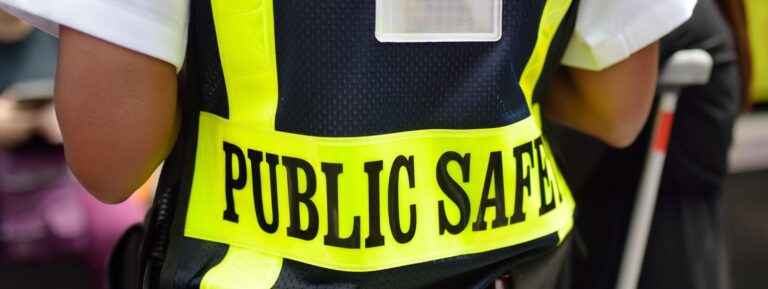Table of Contents
- Recognizing Potential Threats and Trusting Your Instincts
- Practical Safety Measures to Employ Before and During Public Activities
- Effective Communication Strategies to Seek Help and Alert Others
- Steps to Take Immediately If You Feel Threatened or in Danger
- Closing Remarks
Recognizing Potential Threats and Trusting Your Instincts
One of the most crucial skills in maintaining personal safety is developing the ability to identify subtle signs of danger before they escalate. This means paying close attention to your surroundings and the behavior of people around you. Look out for unusual body language like excessive staring, nervous pacing, or attempts to invade your personal space. Be mindful of situations that suddenly feel off-whether it’s an isolated location, a person following you persistently, or a crowd that seems to behave unpredictably. Your mind is wired to pick up on cues that may not be immediately obvious, and these gut feelings are often your best alert system.
When something feels wrong, trust that instinct without hesitation. It’s better to err on the side of caution than to rationalize away your discomfort. Taking your intuitive feelings seriously can empower you to take proactive steps such as seeking a well-populated area, contacting someone you trust, or even calling local authorities if necessary. Remember, instinct is your internal safety radar, and acting on it confidently can make all the difference in preventing harm. Some quick reminders to keep in mind include:
- Stay alert: Avoid distractions like headphones or excessive phone use when in public.
- Plan escape routes: Know where exits or safe zones are if an emergency arises.
- Communicate clearly: If you feel unsafe, don’t hesitate to loudly ask for help or make your presence known.
Practical Safety Measures to Employ Before and During Public Activities
Before heading out, preparation is your strongest ally. Familiarize yourself with the area-know the layout, identify well-lit paths, and locate emergency exits or safe spots such as stores or police stations. Always share your plans with a trusted friend or family member, including where you’ll be and your expected return time. Carry a charged phone with emergency contacts easily accessible, and consider apps designed for personal safety that can alert someone if you’re in trouble. Dressing comfortably and keeping valuables discreet can also reduce unwanted attention.
During public activities, staying vigilant and confident can deter potential threats. Keep your belongings close and avoid distractions such as excessive phone use. Establish clear boundaries with strangers, and trust your instincts-if a situation feels off, remove yourself as quickly and calmly as possible. If you notice suspicious behavior, move toward crowded or secure areas and don’t hesitate to call for help. Practicing deep breathing or grounding techniques can help maintain calm and clarity, enabling you to act decisively when needed.
Effective Communication Strategies to Seek Help and Alert Others
Mastering clear and concise communication when seeking help can make all the difference in critical situations. Start by maintaining a calm and firm tone while directly addressing nearby individuals with phrases like “Please help, I feel unsafe” or “Call the police, I need assistance”. Be specific about your location and the nature of the threat, enabling responders to act quickly and accurately. Using direct eye contact and projecting your voice confidently increases the chances that others will pay attention and offer support. Remember, hesitation or vague statements might delay the help you need.
In addition to verbal cues, non-verbal communication plays a vital role in alerting others. You can:
- Use universally recognized distress signals, such as waving your arms or flashing your phone’s flashlight repeatedly.
- Show open and visible hands to indicate urgency and plead for help without aggression.
- Engage bystanders by making eye contact, nodding towards the potential threat, or pointing discreetly.
Combining these strategies ensures your message is received quickly and clearly, increasing your chance of receiving immediate aid while keeping yourself safe.
Steps to Take Immediately If You Feel Threatened or in Danger
Trust your instincts-if something feels off, don’t hesitate to move quickly to create distance. Locate the nearest safe spot, such as a busy store, café, or any public place where you can seek help. Keep your phone readily accessible and dial emergency services immediately if the situation escalates. While moving, stay alert to your surroundings and avoid distractions like headphones or excessive phone use that could impair your awareness.
Use clear, loud verbal commands to attract attention if you feel threatened. Yelling phrases like “Help!” or “Call the police!” can deter potential aggressors and alert bystanders. Remember, your safety is the priority-don’t hesitate to ask strangers for assistance or create a commotion to draw eyes and ears to your location. Carrying a personal safety device, such as a whistle or alarm, can also be instrumental for immediate self-defense and signaling others.
- Identify escape routes and avoid dead ends.
- Maintain clear, confident body language to discourage targeting.
- Inform a trusted contact about your location and situation if possible.
- Use available public safety apps to share your GPS location in real time.
Closing Remarks
Staying safe in public spaces is a responsibility we all share, and being prepared is key to protecting yourself. By trusting your instincts, staying aware of your surroundings, and knowing how to respond if you ever feel unsafe, you empower yourself to navigate the world with confidence. Remember, your safety matters-don’t hesitate to seek help, set boundaries, and prioritize your well-being. Staying informed and proactive is the best way to ensure you can enjoy public spaces while minimizing risks. Stay safe out there!Check Our Other Blogs
- StunGun – Your Trusted Source for Stun Guns, Laws, and Self-Defense Tips
- PepperSprayLaws – Your Trusted Resource for Pepper Spray Information
- StunGunLaws – Your Trusted Guide to Stun Gun Legality and Safety



